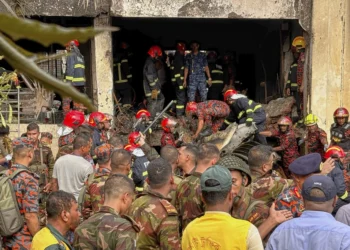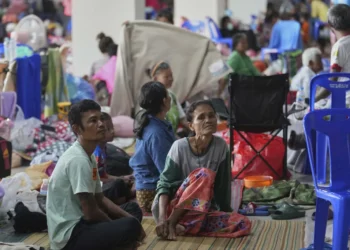ICE Colorado said that agents attempted to detain Salvadoran national Jose Reyes Leon-Deras, who was convicted of child rape in Italy, when members of a local anti-ICE group alerted him to their presence, allowing him to escape.
“During our surveillance of Leon, members of Colorado Rapid Response arrived on scene and alerted him to law enforcement’s presence, which allowed him to escape arrest,” ICE Colorado said. “Groups like this interfere with ICE’s ability to keep communities safe.”
Denver Mayor Mike Johnston previously promised to station police officers throughout the city to prevent ICE agents from conducting deportations, and a 2017 city ordinance limits officials from cooperating with ICE.
Anti-ICE tip-offs across social media
According to the Colorado Rapid Response Network website, the group that tipped off Leon-Deras was launched in 2017 during President Donald Trump’s first term in office.
The network boasts more than 1,200 volunteers and allies and is the only ICE sightings hotline operating in Colorado and southern Wyoming. The organization’s tagline is “your voice is power” in Spanish.
The publication Wired en Espanol identified more than seven different networks using social media to receive, verify, and disseminate information about ICE raids, checkpoints, and patrols across the U.S.
Some of the platforms are managed by non-governmental organizations and prominent activists, but others are run by anonymous entities within the immigrant community.
WhatsApp, Signal, and other encrypted messaging platforms are often used to disseminate information via direct message, but other notifications are posted on individual pages. Users reporting ICE whereabouts or raids are asked to report time, date, city, state, and exact locations as well as photographs or videos whenever possible.
Stop ICE Raids Alert Network, Chirla, and Union del Barrio California all have Facebook presences that share legal advice for migrants as well as information about ICE raids.
According to 2023 data from the International Organization for Migration, 64% of migrants in transit through Latin America, mostly bound for the US, had access to a smartphone and internet connection during their journey.
Social media and anti-ICE protesting
Anti-ICE protestors have also been using social media to coordinate protests outside of hotels and homes of ICE agents to keep them up throughout the night using car horns, trumpets, call-and-response chants, and other forms of noise.
SUSPECTED TREN DE ARAGUA MEMBER CHARGED FOR INJURING, ATTEMPTING TO KILL FEDERAL OFFICER
“No sleep for ICE” protestors have posted the exact locations of ICE agent evening whereabouts across Los Angeles County on TikTok, BlueSky, and X to organize large crowds to disrupt the slumber of ICE agents.
The “No sleep for ICE” protests have not been identified outside of Los Angeles County, where Trump called in the National Guard last week to protect ICE agents conducting deportations.
















